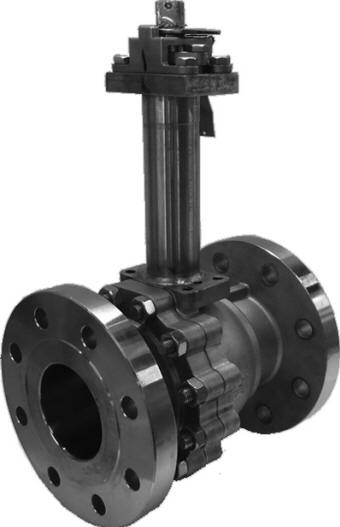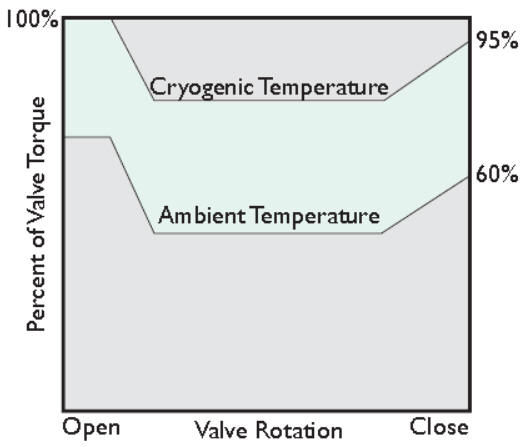Low Temperature Ball Valves
3-piece, full port ball valves designed to operate reliably to temperatures as low as -450ºF

 Cryogenic
ball valves are designed to perform reliably at extremely low temperatures
and with minimal heat exchange between the fluid and environment. This
is achieved using a special valve bonnet mounted to the valves integral ISO
5211 pad. The bonnet provides dead space to help insulate the top
portion of the valve from any boiled off vapors.
Cryogenic
ball valves are designed to perform reliably at extremely low temperatures
and with minimal heat exchange between the fluid and environment. This
is achieved using a special valve bonnet mounted to the valves integral ISO
5211 pad. The bonnet provides dead space to help insulate the top
portion of the valve from any boiled off vapors.
Low temperatures are considered 32F to -150F and cryogenic temperatures extend to temperatures as low as -450F. Most cryogenic applications involve liquefied gasses whose service temperature is hundreds of degrees below ambient temperature. The design of the valve and bonnet accounts for thermal expansion rates and the manufacturing process is complex to ensure complete cleaning and degreasing of all wetted components. There is nothing "standard" about our low temperature service ball valves; their seats have a special profile, the body bolts are spring loaded, the ball is vented and the body has dual seals.
The packing used in ball valves prevents the process liquid from escaping along the valve stem shaft. The packing gland compresses the packing to ensure a tight seal between the valve stem shaft and valve body. These are the components most effected by extreme temperatures and therefore we offer two versions of the bonnet; a standard size and an elongated size to position the packing gland as far away as required for your specific application. The bonnet is threaded onto the valve body and as a safety measure lock washers with retaining nuts are used to ensure a solid connection with the valve body. (The upstream relief hole within the diverting ball prevents over-pressure from thermal expansion.) Therefore cryogenic valves have a specific inlet and outlet port for that feature to be effective and they are clearly marked on the nameplate.
Valve torque increases when moisture freezes onto the ball surface or thermal contractions of the ball valve materials; refer to our catalog pages for actuator torque tables which already incorporate a safety factor to simplify actuator sizing.

Offered in sizes up to 14" and for pressures as high as 1,500 PSI, they are constructed entirely of 316L SS and can have any of the following connections types:
-
Threaded
-
Socket
-
Butt Weld
-
150/300/600/900 RF ANSI flanged
Features:
-
Integral safety locking lever handle
Options:
Please call us at 908.362.9981 for immediate assistance with your application




